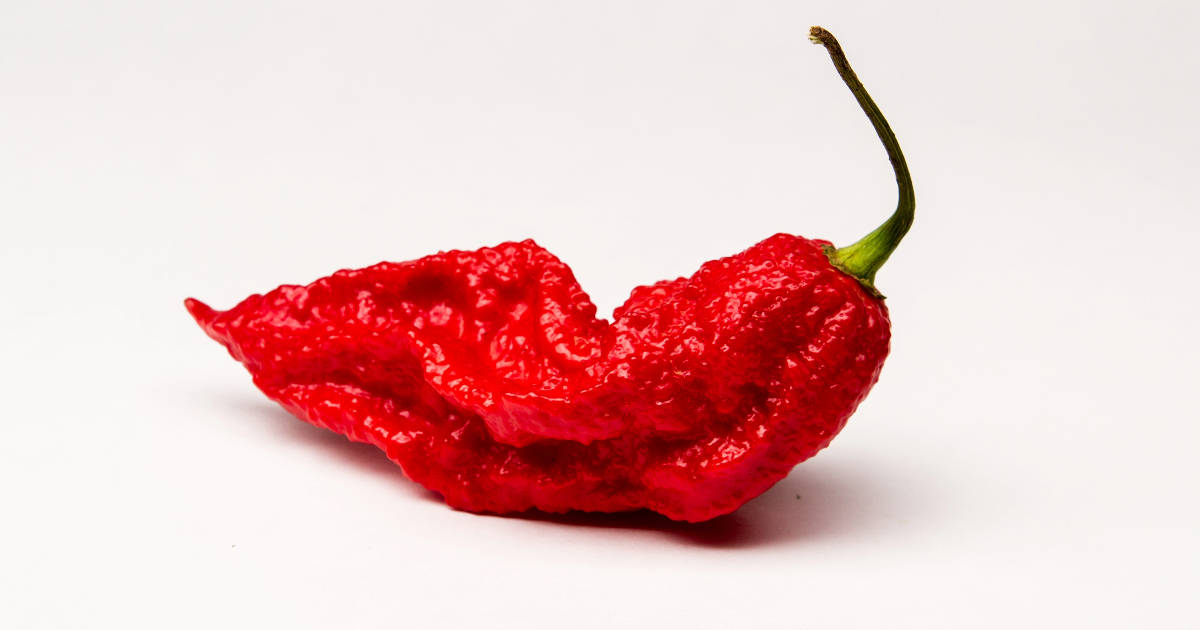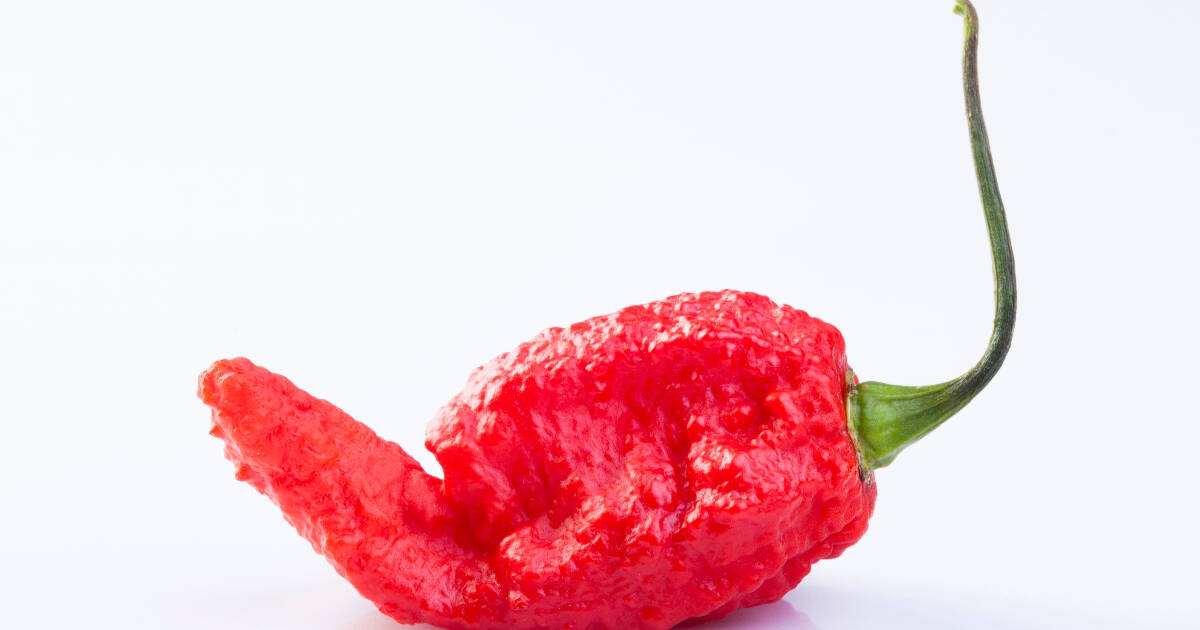The ghost pepper is one of the world's hottest chili peppers, known for its extremely spicy heat that sets tongues ablaze. In powdered form, ghost pepper packs a powerful punch, registering over 1 million Scoville heat units. This potent powder should be handled with caution by daring cooks.

Read on to learn all about the Scoville scale, its uses, and proper handling for ghost pepper powder. This guide will provide everything you need to know before unleashing the scorching flavors of this infamous chili pepper. So get ready to turn up the heat in your kitchen!
A Brief History of the Ghost Pepper

The ghost pepper, also known as bhut jolokia, is an extremely spicy pepper native to Northeast India. This pepper likely originated in the Indian states of Assam, Nagaland, and Manipur, where it grows in hilly terrain. The ghost pepper was originally named the "bhut jolokia" which translates to "ghost chili" in Assamese. It earned this name from the fact that it would seem to vanish into thin air when ripe, giving it a "ghostly" presence.
The ghost pepper remained relatively unknown outside of Northeast India until around 2000. At this time, it started gaining international attention for its extreme heat levels. In 2007, Guinness World Records certified it as the world's hottest chili pepper, with a Scoville heat rating of over 1 million units. This reign lasted until the even hotter Carolina Reaper overtook it in 2013. However, the ghost pepper still ranks among the hottest peppers in the world today.
How Spicy is Ghost Pepper Powder?
Ghost pepper powder is incredibly spicy, even in small amounts. On the Scoville scale, it ranks between 800,000 to 1,001,304 Scoville heat units (SHU). For comparison, a jalapeño pepper scores between 2,500 to 8,000 units while the habanero ranges from 100,000 to 350,000 units. So the ghost pepper easily surpasses both of these other notoriously spicy peppers.
The active ingredient that gives all chili peppers their heat and spiciness is capsaicin. The ghost pepper has exceptionally high levels of capsaicin concentrated in its seeds and inner ribs. This capsaicin triggers a burning sensation when it comes in contact with mucous membranes, like the tongue or eyes. Therefore, ghost pepper powder delivers an intensely fiery burn. Even just 1/4 teaspoon is enough to set your mouth ablaze.
Culinary Uses for Ghost Pepper Powder
Using ghost pepper powder allows cooks and chefs to harness the extreme spiciness of the ghost pepper. Because it's dried and ground, the spicy heat is distributed evenly throughout the powder. This makes it easier to control how much heat you add compared to using fresh peppers.
Here are some of the most popular ways to use ghost pepper powder:
- Spice rubs and marinades: Mix just a pinch or two into rubs and marinades to give a fiery kick to meats. Goes well with beef, pork, chicken, and fish.
- Hot sauces: Blend ghost pepper powder into hot sauces, salsa, and chili to amp up the spiciness. A little goes a long way.
- Snack seasonings: Sprinkle on nuts, popcorn, fries, or chips if you like snacking on super spicy foods.
- Curries and stews: Ghost pepper powder can add intense heat to curries, chilis, and stews. Use sparingly depending on your heat tolerance.
- Baking: Add a pinch to spice up chili cookies, brownies, cakes, or bread. Use with caution as it can overpower other flavors.
- Eggs: Stir into scrambled eggs or omelets for a spicy kick to your breakfast.
No matter how you use it, remember that ghost pepper powder packs some serious heat. Start with small amounts and add more gradually to reach your desired level of spiciness. A little ghost pepper powder goes a very long way!
Is Ghost Pepper Powder Safe to Eat?
Yes, ghost pepper powder is safe to consume for most people when used in moderation. However, there are some safety precautions to keep in mind:
- Try a small amount first - If you've never had ghost pepper powder before, taste just a tiny pinch before adding it to food.
- Use sparingly - More is not necessarily better with ghost pepper powder. Use small amounts and add more if needed. Overdoing it can lead to a painful or dangerous burn.
- Avoid contact with eyes and skin - Capsaicin can cause irritation. Wear gloves when handling and wash your hands immediately after.
- Have milk, yogurt, or ice cream ready - Dairy products can help tame the burn if you do overdo it. Bread and rice also help absorb some of the heat.
- Avoid giving to children - Ghost pepper powder is typically too spicy for children.
- Check for allergies - Though rare, some people may be allergic to chili peppers. Check for any reactions when trying ghost pepper powder for the first time.
- Know your limits - If you have digestive issues or a sensitive stomach, ghost pepper powder may be too much to handle.
As long as you use appropriate caution, ghost pepper powder can be enjoyed by daring spice lovers looking to add intense heat to their food. But it's definitely not for everyone, especially those with low spice tolerance.
Tips for Cooking with Ghost Pepper Powder
The extreme heat of ghost pepper powder requires special care when cooking with it. Here are some tips to use it successfully:
- Measure precisely - Use measuring spoons to carefully measure out ghost pepper powder. Estimating can easily lead to overdoing it. Start with 1/8 teaspoon or less.
- Mix thoroughly - When adding ghost pepper powder to sauces, rubs, etc. mix very thoroughly to distribute evenly. This prevents overly spicy hot spots.
- Add gradually - It's best to add ghost pepper powder bit by bit and taste it, rather than all at once. You can always add more if needed.
- Wear gloves - Gloves protect your hands from the volatile oils when handling ghost pepper powder. Avoid touching your face and wash your hands after.
- Mind your eyes - The powder can irritate the eyes and nose. Avoid hovering over the powder.
- Use separate tools - Designate a teaspoon or bottle just for ghost pepper powder to avoid cross-contamination with other foods.
- Store properly - Keep ghost pepper powder in an airtight container away from heat, moisture, and sunlight to preserve freshness and spice.
- Simmer - When adding to hot dishes like soups and stews, simmer for 10-15 minutes to help mellow and blend the flavor.
- Have antidotes ready - Keep dairy, bread, rice, or other items on hand to tame the heat if it becomes too much.
With the proper precautions, ghost pepper powder can add intense spicy flavor to your cooking. But remember, you can always add more heat, you can't take it away, so start slowly!
How to Store Ghost Pepper Powder
To get the longest shelf life and preserve the flavor of your ghost pepper powder:
- Use air-tight containers - Store in a tightly sealed glass jar or other airtight container. This prevents moisture absorption.
- Keep cool & dry - Optimal storage temperature is 60-75°F in a dark, dry spot. Refrigeration can extend shelf life.
- Limit air exposure - Press out air bubbles and minimize headspace when sealing the container. Oxygen degrades spices.
- Avoid sunlight - Light can accelerate the breakdown of flavors and colors. Store the container in a cabinet or pantry.
- Control humidity - Low humidity helps prevent caking and deterioration. Add rice or a desiccant pack if needed.
- Buy only what you’ll use - Ground spices lose potency faster than whole. Purchase ghost pepper powder in small quantities.
- Use quickly - For the best flavor, use up ghost pepper powder within 3-4 months. Properly stored, it can last 6 months to a year before declines.
- Check for freshness - If powder loses its vibrant color and aroma, it’s time to replace it with a fresh batch.
With the proper storage methods, you can lock in the spicy heat and flavor of your ghost pepper powder for months to come. Just be sure to handle this incendiary powder with care whenever you break open the container!
FAQ
What color are ghost peppers when ripe?
Ghost peppers turn a vibrant red color when fully ripe. Unripe ghost peppers start off green and slowly transition to orange, then finally red. Allow peppers to fully ripen on the plant for the best flavor and heat. The red ripe color signals that the ghost pepper is at peak spiciness.
What's a good substitute for ghost pepper powder?
If you find ghost pepper powder too hot to handle, try using habanero powder instead. While still very spicy, habanero powder has 100,000 to 350,000 Scoville units compared to the ghost pepper's 800,000+ units. Cayenne powder is another milder substitute at 30,000 to 50,000 Scoville units. Adjust the amount to your taste preferences.
Is it safe to touch ghost peppers?
It's best to avoid direct skin contact with ghost peppers. The oils can cause skin irritation, rashes, and even blisters in sensitive individuals. Wear gloves when handling whole ghost peppers. If you do get oils on your skin, wash immediately with soap and water. Avoid touching your eyes or face after exposure.
Can you use ghost pepper powder in desserts?
Yes, ghost pepper powder can be used sparingly to add a spicy kick to some desserts like cookies, brownies, and chocolate truffles. Start with just a pinch mixed into the batter. Spicy-sweet heat works well in moderation. Avoid using too much or ghost pepper may overpower the sweetness.
Conclusion
From its origins in India to its current popularity among wild spice lovers, the ghost pepper and its powdered form continue to astound with intense, record-breaking heat.
Harnessing its fire requires knowledge and caution. But for those who can handle it, ghost pepper powder adds a uniquely scorching thrill. This devilish powder will surely keep delighting - and punishing - bold palates for years to come.
Approach with care, enjoy with caution, and prepare to have your tastebuds blown away by the otherworldly spice of the ghost pepper!

